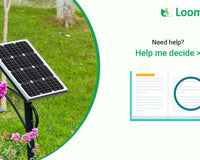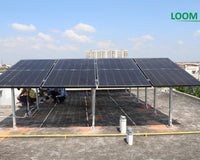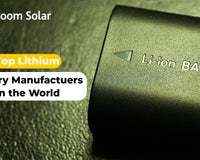In modern times there are multiple ways to generate electricity to fulfill your energy need and don’t need to wait on government for electricity. Solar is one of the low cost, green energy and sustainable product that can be owned by each one of us.
How it works?
It is important to learn that how it is made, it is made of silicon as a material, which is commonly found on our earth, as we know that making silicon cells of desired quality is difficult and expensive process.
However, home solar system are being built with similar material but at very low cost like copper, indium, gallium, and selenide (CIGS), It is not as efficient as high quality silicon cells but still it provides adequate amount of power at very low price so it is affordable for most residential.

When it is manufactured small amounts of other element are added to alter the electrical charges of the silicon atoms. This results in strips of negative (n-type) silicon, which has an extra electron; and positive (p-type) silicon, which is missing one electron. Though when it is sandwiched together these two types of silicon form a photovoltaic cell and when multiple photovoltaic cells are placed under glass simultaneously, they provide us panels we see atop building today.
Inside each solar panels, there is a conductive metal plate connected to wires that lead to a fused array combiner. A device is used to collect energy through an inverter, where the energy’s natural direct electric current is changed to the alternating electrical current required to power human made appliances.
How solar power turn into electricity
Sunlight is a form of energy consisting of invisible photons that have energy, but zero rest mass. When photons come in contact with other photons, energy expands in several ways depending upon the kinds of atoms they touch. Mostly heat is generated when it happens.
On the other side, electricity is produced when electrons circle atoms, the reasoning behind why photovoltaic cells contain materials with different electrical charges. See, when the sun hits a silicon crystal, the electrons inside of it begin to jump up and down. And eventually, some of them become so charged up, the break free and move more freely. The n-type silicon electrons seek out the ones in p-type silicon to replace the missing electrons within their atoms producing an electrical current from the motion of these electrons.
The amazing semiconductor qualities of silicon (similar material) make it possible to sustain constant electron imbalances. Meaning a steady supply of solar electricity is going to be at hand every time the photons hit the solar panels. A current collected by wires and carried throughout the system.
Key challenges in electricity generation using solar panels?
Now you got awareness about electricity generation using solar panels but there are few points that must you keep in mind during designing and installation of solar system at home.
- Shade: If you know about solar then you must be knowing about shade, if solar panels are installed under shade it won’t provide full efficient electricity compare to direct sunlight.
- Seasonality: Due to change in weather, energy efficiency of solar change day by day or month by month. A cloudy day won’t produce much electricity as summer day.
- Tilt: Solar panels are more effective if its mounted in correct direction facing direct sunlight, In real scenario, solar panel should be at the same angle as latitude where they have mounted. Usually it should be between 30-45 degree in most scenario.
- Azimuth: It is compass direction where sunlight is coming. During noon sunlight comes from south side, A wrong angle also will reduce efficiency of solar panels.













